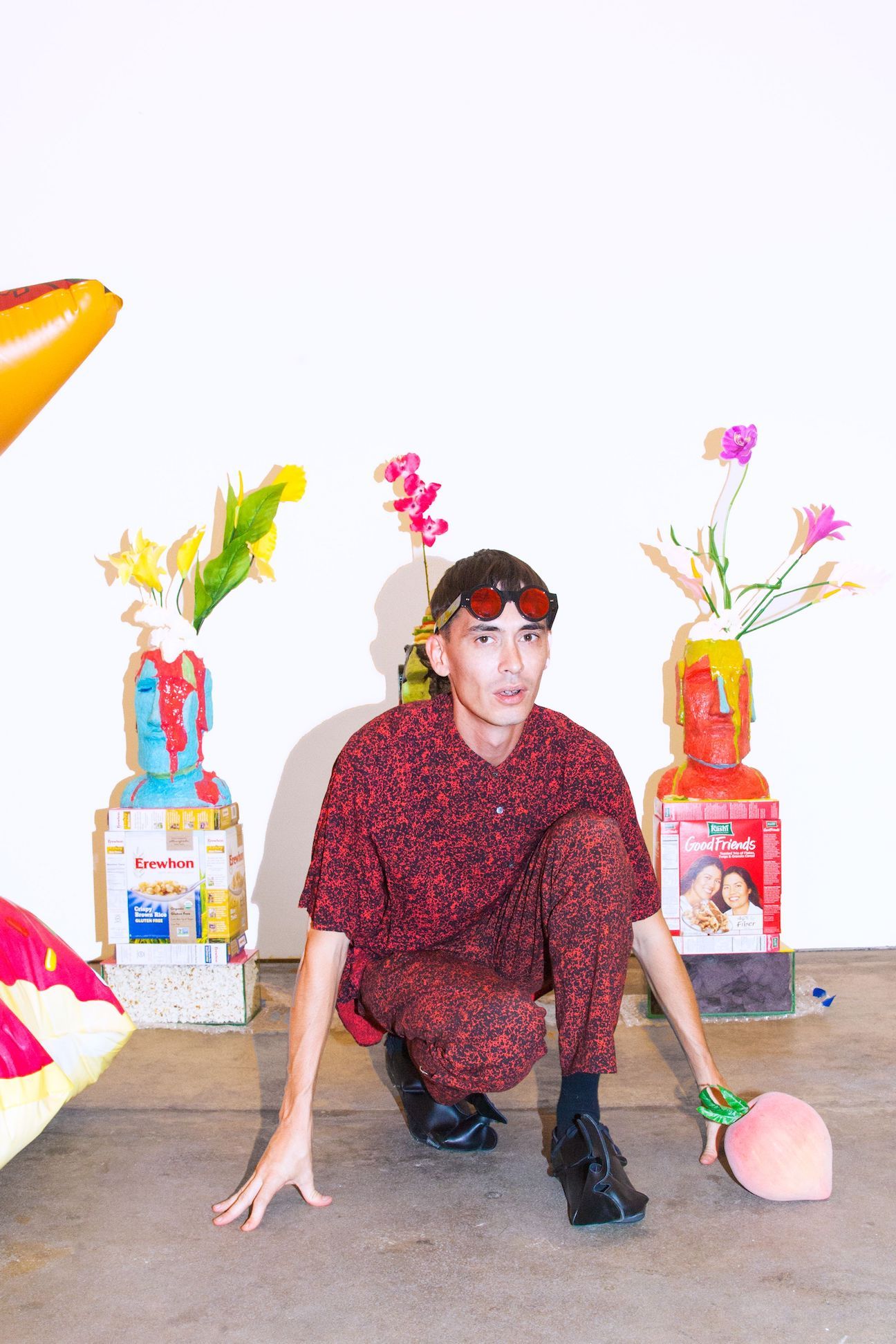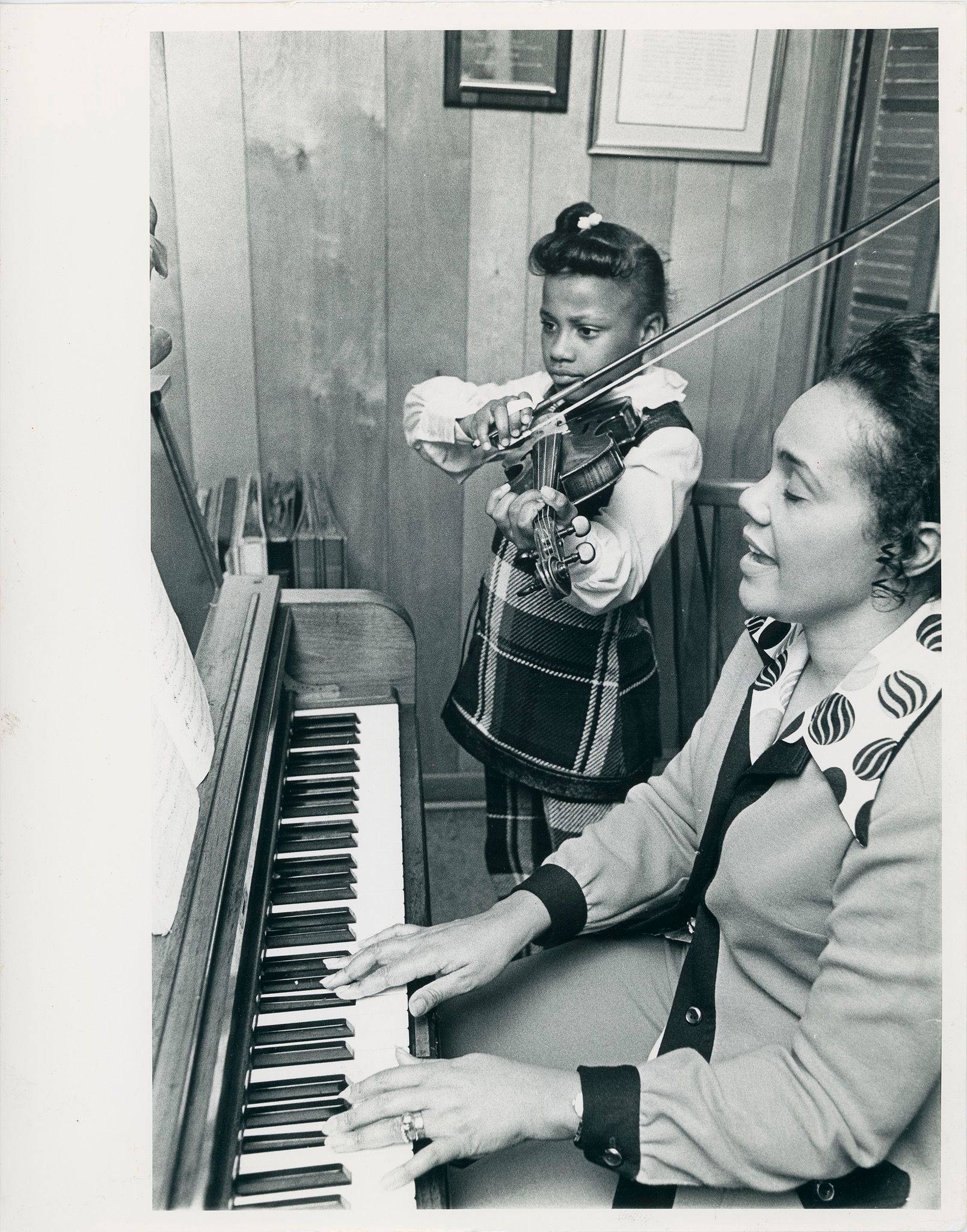ITEM IDEM Invades New York City with a “Tiki Pop” Reflection on Late Capitalism

CYRIL DUVAL—also known under the name of his semi-fictional brand ITEM IDEM—is a creative virtuoso and a 21st century master of disguise. Driven by his eye for the mythological wonder of consumer culture, Duval engages in an interdisciplinary practice that sprawls across the boundaries of genre and context. For his first solo exhibition in the United States at JOHANNES VOGT in Chelsea, Duval presents “Voir Dire,” an iconographic collision of pop narratives—from McDonald’s to Disney to Tiki—that simultaneously augments and subverts the mechanisms of consumer fantasy.
032c spoke with Duval in anticipation of the opening of his exhibition”Voir Dire” in New York City.
This is your first US solo exhibition. How has being in this new context—being in the United States and Chelsea, in particular—inspired the work?
Chelsea is the epicenter of the New York market. I am surrounded by art for all tastes, which was actually mildly terrifying to me, as I am not so used to such a “competitive” industry context. But the challenge of producing a gallery show was definitely entertaining, as was the notion of what an artwork is or should be. It’s actually quite different—limitation in sizes for example, or the way it is perceived, or the “white box” setting. All of those parameters influenced the look and the feel of the works I created specifically for this show.

What are the challenges and surprises that come with your habit of traversing the borders between fashion and art? What does that metaphorical customs house look like?
I have never really been specifically stimulated by the dynamics between fashion and art solely, but I am definitely keen on appreciating the cultural and political powers inherent to all sorts of brands. The idea of infiltrating the mental space of such huge corporations is fascinating to me! I deeply enjoy figuring out the clues of their communicational endeavors, how they have evolved through the years, and what or who they are aiming at. It sometimes feels as though I were—on my own—the entire advertising department of a global firm! “Voir Dire” is all about that. There are a couple mental “red threads” framing the narration of the exhibition—cultural and political ideologies from the 1940s, or the 60–70s—fascist statuary memes and their constant recurrence over the years. There’s also the construction of political images within the Hollywood factory—especially at Disney—and the evolution of brand slogans from heavyweight propaganda messages towards subtle and more insidious consumer manipulation processes.
Can you tell us about the process of amassing these objects? How do things catch your eye?
The shelf sculptures I built enhance a selection of branded artifacts that I have sourced from all over the world during the past decade. They are peculiar objects that fail at being efficient consumerist items—objects that, in turn, provide new meanings. Capitalism fascinates me in the sense that it can be so user-friendly. There is a form of poetry that I find in slogans and product names—in how inspirational or motivational they can be. To this extent, my collection is emphasized by some mass-marketed products and packagings, such as cereal boxes, that are physically assembled as the sculptural pedestal that supports them. All the sculptural works I am presenting in this show are highly influenced by Brancusi’s legacy, where the pedestal functions as part of the work itself. And, of course, the influence of George Maciunas—and in a more recent context, Haim Steinbach—was preponderant in my art-making process.

What do you see as the promises and failures of mass-produced images and products? How do they excite us? How do they let us down?
Those brand contents are built on the narration of modern day ideologies, where consumer culture provides us all with solutions and remedies. The evolution of graphic design in posters and advertisements is probably the best witness to how brands have been addressing consumers over the years and it is fascinating to see how radical and sophisticated this form of communication has become nowadays. The seminal “Voir Dire” piece actually emphasizes that aspect by featuring an original score by Ray Kroc—the legendary founder of McDonald’s—teaching the brand’s philosophy in a direct message to his employees punctuated by brand jingles of the era. I find this form of indoctrination fascinating, but frozen in the past. Brands like Google, Apple, or Monsanto, for example, have came a long way from such a communication process. But within modernity, I believe their methods are direct heirs to the strategies developed by geniuses like Walt Disney or Ray Kroc.
You have been quoted saying that this exhibition is about “Tiki Pop.” What draws you to Tiki aesthetics? It seems as though people normally associate Tiki with Americans in the Midwest who wished they were in Tahiti. It’s almost a type of deferred exoticism.
I concur with the fact that Tiki Pop is sort of redneck fantasy, and the kitsch symbolism associated with it inspires me. Its mass appeal functions as a soothing ideology that evokes the “far away” and the peaceful evasion of the mind during the search for a lost paradise. Somehow I understand this pastoral cliché as a 1960s interpretation of previous cultural genres such French Romantic writings by Chateaubriand, or Primitivism such as the paintings of Gauguin. The golden era of the 60s encompassed this search for a new ideal, and the consumer culture of that time provided mental postcards of that dreamt aesthetic. I am interested by the seminal influence of those cultural contents—we call them ‘Images d’Epinal’ in French—as a naive and simplified depiction of something.
For more information on Duval’s projects, visit itemidem.com.

